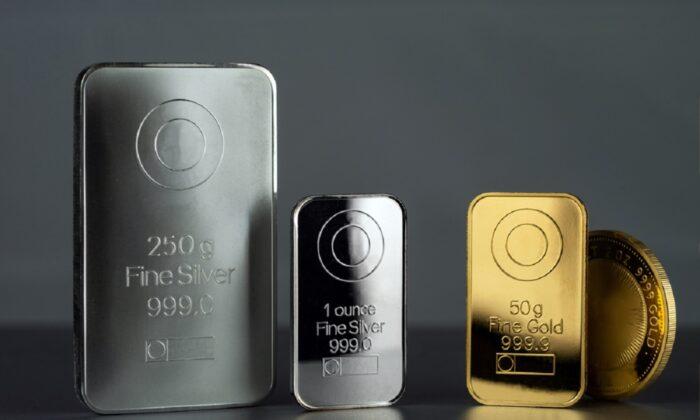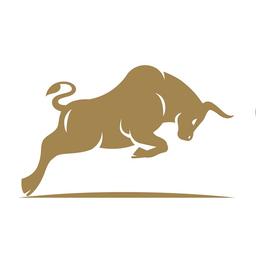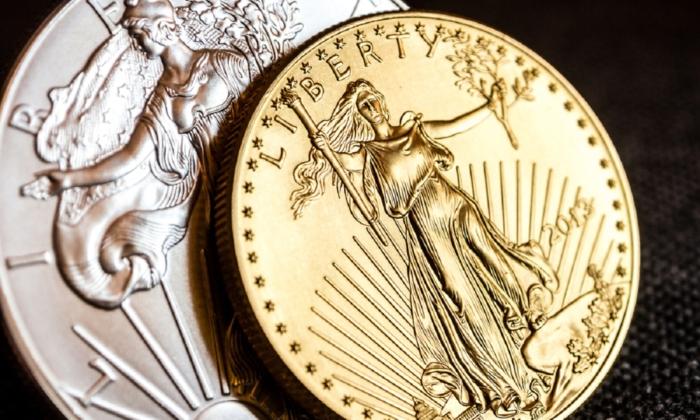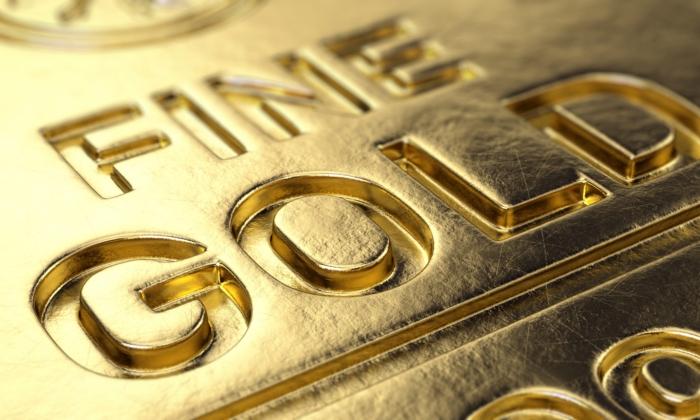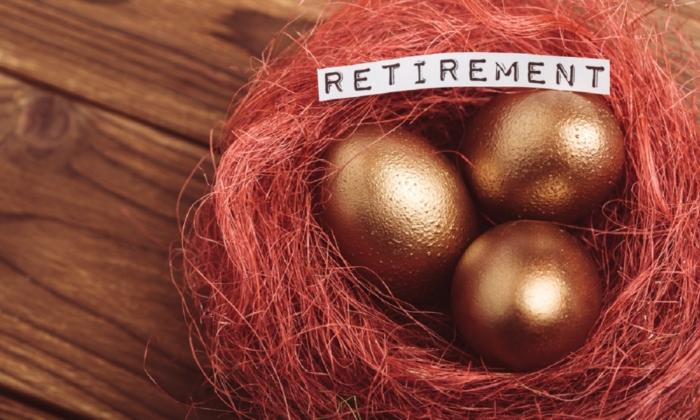Gold and silver and other precious metals like platinum and palladium provide valuable security in times of financial turmoil. Despite price fluctuations, physical precious metals pose no credit risk and retain an intrinsically high economic value even when the stock market crashes.
Typical Cost of Precious Metal Investment
The first and most apparent price tag of investing in precious metals is the price of physical precious metals. Each precious metal has unique risks and benefits, which you should remember when making investment decisions.Gold
Gold has always been a prevalent, safe investment to hedge against economic collapse and crashing stock markets. Physical gold ownership can provide investors with a solid, valuable commodity when the fiat money supply loses value and global markets crumble.You can purchase gold bullion as bars, coins, or rounds. When buying physical gold, look for the .9999 or 999.9 purity stamp, which shows your coins or bars contain a minimum of 99.99 percent gold.
At the time of writing, gold costs $1,685.00 per ounce, or around $54 per gram. Although gold prices may fluctuate, the overall price of physical gold has risen in value over the past 30 years.
Silver
Like gold, silver can be a good investment in an uncertain economy. While both gold and silver are valuable metals, silver prices are much lower and more volatile. When writing, silver prices hover around $22 per ounce.Platinum
Platinum ranks third after gold and silver on the most popular investment precious metals list. Platinum has many uses in jewelry and industrial products like catalytic converters, dentistry equipment, and more. Industrial platinum demand may change with the shift toward electric cars, which don’t require platinum.Palladium
While palladium resembles platinum, this precious metal is slightly harder and less dense. Palladium is an essential industrial metal with many uses, from chemical reaction catalysts to groundwater treatment agents.Like platinum, palladium is a vital component in catalytic converters, so the demand for palladium may dip as more people choose electric vehicles that don’t use a converter. However, palladium may become more prevalent in other chemical applications, so predicting its future worth is tricky.
Other Precious Metals
Investors looking to diversify their precious metal portfolios may look into rarer metals like iridium, osmium, rhodium, and ruthenium. These metals are typically hard to find and may fetch significantly higher prices than conventional choices. For example, an ounce of rhodium costs close to $14,000.Other Fees You May Come Across
Apart from the market price of gold, silver, and other metals, investing in precious metals involves many administration and storage fees.For example, if you set up a gold IRA account, you may pay: · Application and setup fees · Commission fees whenever you make a transaction through your IRA account · Annual storage and maintenance fees · Handling fees if you choose to ship bullion out of storage · Markups on coins and other types of physical bullion, unless you buy directly from the mint · Liability insurance · Termination fees if you decide to close your account
Cost of Precious Metal Storage
Physical possession of precious metals calls for a secure and convenient storage solution. If you buy physical precious metals, you have three main storage options: · home storage in a private safe, which offers easy accessibility but also exposes your bullion to dangers like burglary and natural disasters; · a safe deposit box or a private bank vault in a reliable financial institution; and · professional metal depositories, which usually offer segregated (private) and allocated (shared) storage options.Storing large quantities of physical metals in their homes is impractical and risky for most investors. Keeping precious metals in a bank or a secure depository is a far safer method that protects your investment from theft and loss. Moreover, a professional depository will provide optimal storage conditions that prevent the oxidation and tarnishing of precious metals.
Rather than setting fixed storage fees, depositories typically ask for a percentage of the value of the stored bullion. Silver may be more expensive to hold than gold since it has a much lower value per weight unit.
Do You Need to Pay Tax When You Buy Physical Precious Metals?
Potential tax costs are a primary concern for Americans considering investing in precious metals. Precious metals count as “collectibles” under the IRS definition and are thus subject to a 28 percent capital gains tax.For example, this tax rate would apply if you sold your bullion after possessing it for over a year. Other asset classes, in contrast, are usually subject to a 15 percent or 20 percent capital gains rate.
Moreover, this rule applies to physical precious metals and the majority of metal ETFs.
Fortunately, private U.S. investors may reduce the taxes they pay when they make a profit from their precious metals. One popular way to do this is to place metals in a Sprott Physical Bullion Trust, a Canada-based trust that counts as a passive foreign investment company (PFIC). Gains from assets in these trust types are subject to the 15 percent or 20 percent tax rate.
Are There Ways to Reduce Fees?
The number-one question every gold and silver investor should ask is: “Am I getting maximum value for the price I’m paying?”Wise investors follow best practices, such as comparing the prices of precious metals, IRA management, and storage costs.
Using Dollar-Cost Averaging
Dollar-cost averaging (DCA) is regular, incremental purchasing of a specific type of asset for a certain price over a period of time. This strategy aims to counteract market volatility.For example, let’s say you set aside $10,000 to invest in precious metals. According to the dollar-cost averaging strategy, rather than buying $10,000 worth of metal at once, you may invest $1,000 every month over 10 months. Theoretically, this investment method should protect you against buying assets at high price points.
However, according to many professionals, dollar-cost averaging is a questionable investment strategy. While it may be psychologically more accessible for beginner investors to pour small sums into precious metals rather than invest much cash at once, DCA may result in losses when interest rates are low and precious metals are climbing steadily.
Other Tips When Purchasing Precious Metals
Consider a few other factors to make the most of your physical metal investments. Namely, you should:· Choose a trusted dealer. Excessively low prices or fishy transaction procedures are major red flags indicating fraud. · Go for the most secure type of bullion: standardized metal bars or rounds or internationally recognized coins from government mints. Special edition coins, antique coins, and other collectibles may have high numismatic value, but there’s no guarantee you will find a buyer. · Consider liquidity. Although rounds and coins have a slightly higher premium, they may be easier to sell than metal bars. · Diversify. With all the advantages of investing in precious metals, gold, silver, or platinum, bullion won’t pay dividends at the same rate as more quickly appreciable assets, like stocks and real estate. A skilled financial advisor can help you divide your portfolio between security assets and investments that boost your cash flow, including bullion, mutual funds, and stocks. · Assess your risk tolerance. How much money are you willing to lose if the market crashes? Higher risks may offer bigger opportunities but a larger potential for loss when investing in precious metals. Your risk tolerance may depend on your stage of life—for instance, if you are near retirement or want to make sure you have enough money to send a child to college next year.
